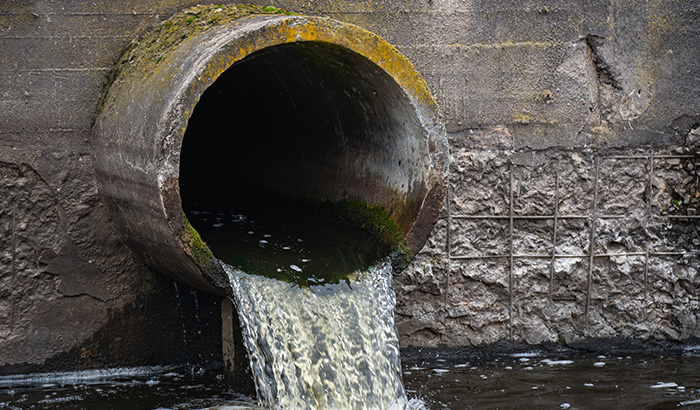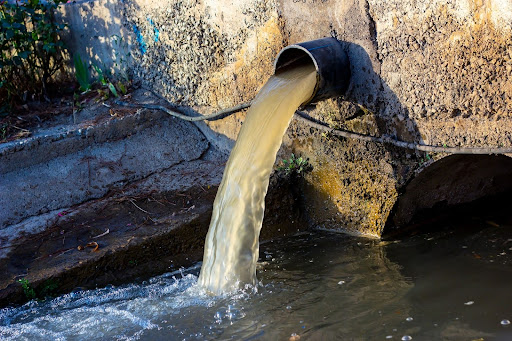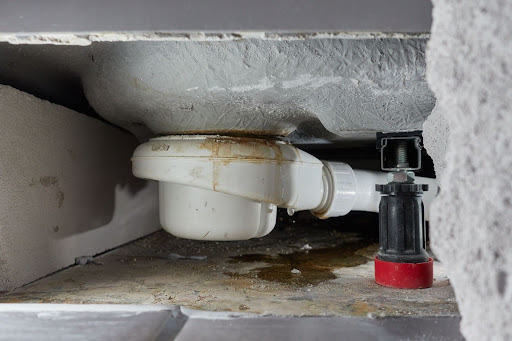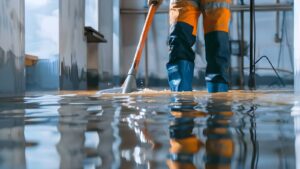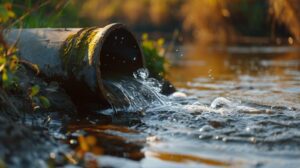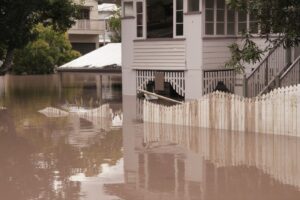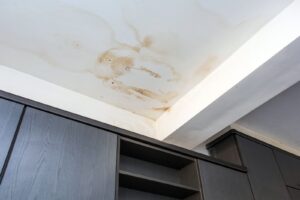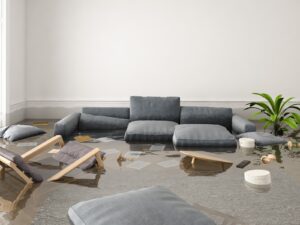Sewage damage is a topic that might not be the most pleasant, but it is undeniably crucial to homeowners and property managers alike. Understanding the different types of sewage damage is vital for safeguarding your home and the well-being of its occupants.
Sewage damage occurs when wastewater containing human waste, debris, and other contaminants invades areas where it doesn’t belong. This wastewater can originate from various sources, including overflowing toilets, backed-up sewer lines, or even natural disasters like floods.
Now, you might wonder why it’s essential to grasp the nuances of sewage damage. Well, for starters, not all sewage damage scenarios are created equal. Different situations require different approaches for cleanup and restoration.
By understanding the various types of sewage damage, you’ll be better prepared to address them promptly and effectively, minimizing the associated risks and expenses. Whether you’re a homeowner or a property manager, this blog will equip you with the knowledge and insights needed to tackle sewage damage head-on.
Types of sewage damage
Now that we’ve established the importance of understanding sewage damage, it’s time to get into the different types you might encounter. Each scenario presents unique challenges, so it’s essential to recognize them and know how to respond.
Overflowing sewage pipes or drains
Overflowing sewage pipes or drains can be a homeowner’s nightmare, often attributed to blockages, clogs, or damage within your plumbing system. In some cases, heavy rains or flooding overwhelm sewer lines and exacerbate the problem.
Swift action is the key when you encounter an overflowing sewage issue. If possible, turn off the water supply to the affected area to prevent further inundation. Sewage water is highly contaminated and may harbor harmful bacteria and pathogens, so avoid direct contact at all costs.
Effective cleanup following an overflowing sewage incident necessitates thorough disinfection and decontamination. Porous materials, such as carpets or insulation that have come into contact with sewage, should be promptly removed and discarded. Pay close attention to disinfecting affected surfaces and ensure proper ventilation to expedite drying and minimize the risk of mold growth.
Sewage backup into the home
Sewage backups into your home occur for various reasons, such as blockages in the main sewer line, damaged pipes, or even surges in water volume during heavy rainfall.
Sewage backups pose significant health risks due to the potential presence of harmful pathogens. These contaminants often lead to infections and illnesses upon contact or inhalation. This makes immediate precautions essential.
Addressing the source of the backup is the first step. Clear any clogs or repair damaged pipes to prevent a recurrence. Cleanup after a sewage backup should be meticulous and involve the removal and disposal of contaminated materials. Consider installing backflow prevention devices to reduce the risk of future backups.
Sewage in the crawlspace or basement
Sewage infiltration into crawl spaces or basements is often the result of foundation cracks, faulty drainage systems, or inundation during heavy rainfall or flooding events.
Aside from the obvious health concerns, sewage in these areas can compromise your property’s structural integrity. It can weaken foundations, damage walls, and create a conducive environment for mold growth.
Cleaning up sewage in crawl spaces and basements requires extra care. Adequate ventilation is crucial to remove foul odors and moisture. Remove and properly dispose of contaminated insulation or materials. Extensive disinfection of surfaces is essential. Promptly address any structural damage to prevent long-term issues.
Contaminated groundwater intrusion
Contaminated groundwater can infiltrate your property through foundation cracks or drainage issues, often resulting from nearby sewage systems or industrial spills.
Contaminated groundwater is hazardous to your health and harmful to the environment. It may contain a cocktail of chemicals, toxins, or pathogens harmful to humans and wildlife. Addressing contaminated groundwater requires a more complex approach.
Seeking assistance from professionals experienced in groundwater remediation is highly recommended. Implementing preventive measures such as waterproofing and proper drainage helps reduce the risk of future contamination incidents. Ensuring your property is well-protected from contaminated groundwater intrusion is a proactive step toward safeguarding your health and the environment.
Understanding these various types of sewage damage equips you with the knowledge needed to respond effectively. Remember, safety and immediate action are paramount when dealing with sewage issues. In the following sections, we’ll discuss health precautions, cleanup processes, and preventive measures in more detail.
Professional vs. DIY cleanup
Dealing with sewage damage is a challenging task, and you might be wondering whether to handle it yourself or hire professionals. Let’s discuss the advantages of both options and when it makes sense to consider a do-it-yourself approach.
Benefits of hiring professionals
When you hire professionals for sewage damage cleanup, you’re tapping into their knowledge and years of experience. They are well-versed in the complexities of sewage cleanup, knowing how to assess the extent of the damage, which areas to disinfect, and how to mitigate health risks effectively. Their expertise ensures a thorough and safe cleanup process.
Professionals come equipped with the right tools and equipment specifically designed for sewage cleanup. This equipment allows them to handle the task efficiently and with precision. Moreover, they prioritize safety by wearing appropriate protective gear, reducing the likelihood of exposure to harmful pathogens during cleanup.
When DIY cleanup may be an option
You might consider a do-it-yourself cleanup for minor sewage spills or small-scale incidents you feel confident managing. However, it’s crucial to assess the extent of the damage and your own comfort level with handling such situations.
If you decide to go the DIY route, prioritize safety precautions. Equip yourself with protective gear, including gloves, masks, and waterproof boots, to minimize contact with contaminated materials. Adequate ventilation is also essential to prevent inhaling harmful fumes. Ensure thorough disinfection and proper disposal of contaminated materials.
While DIY cleanup may be suitable for minor incidents, keep in mind that it is not the best choice for extensive sewage damage or situations involving significant health risks. In such cases, it’s advisable to seek professional assistance. Always prioritize your well-being when dealing with sewage damage, and don’t hesitate to turn to professionals when the situation warrants it.
Total Flood & Fire Restoration is your reliable partner
In the face of sewage damage, your safety and the well-being of your property are of utmost importance. At Total Flood & Fire Restoration, we understand the complexities of sewage damage cleanup. Our experienced team possesses the knowledge, equipment, and commitment to safety needed to ensure a thorough and safe restoration process.
Don’t compromise when it comes to sewage damage cleanup — contact Total Flood & Fire Restoration for expert assistance and peace of mind. Your property deserves the best care, and we’re here to deliver it.

